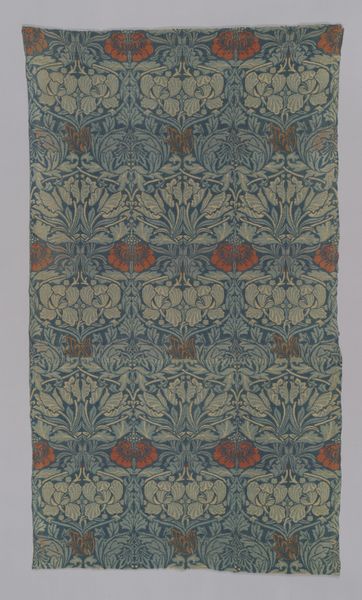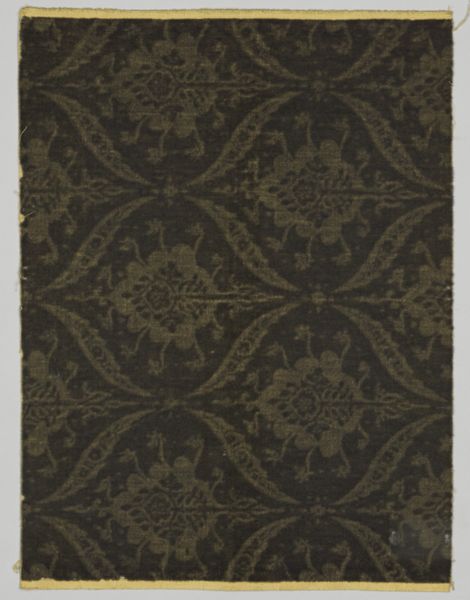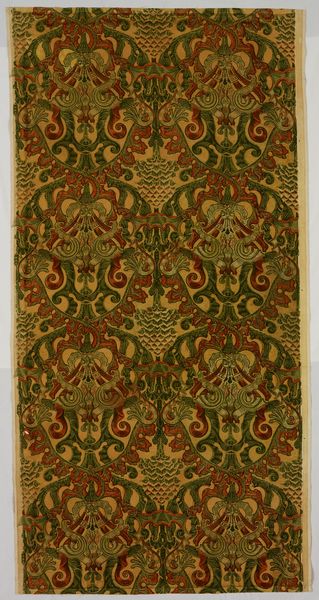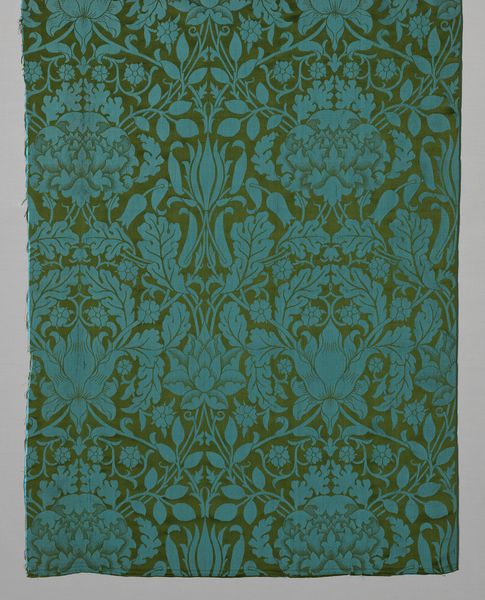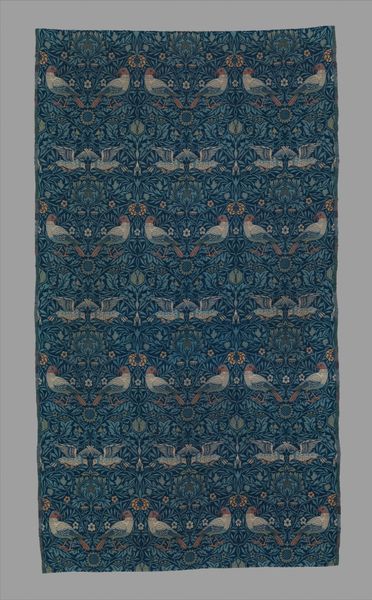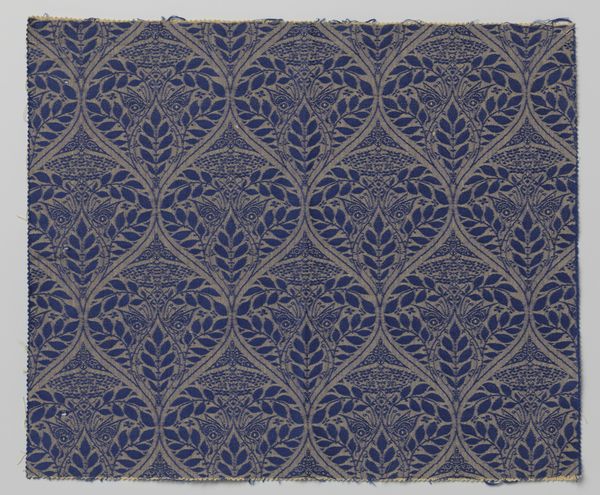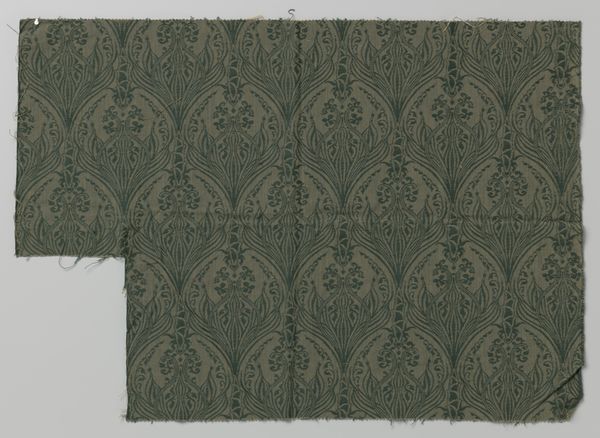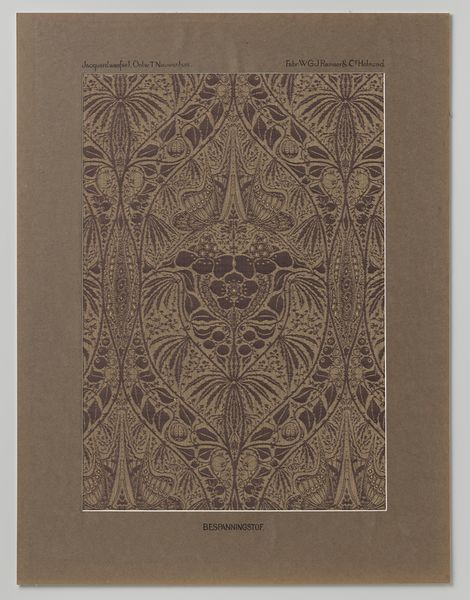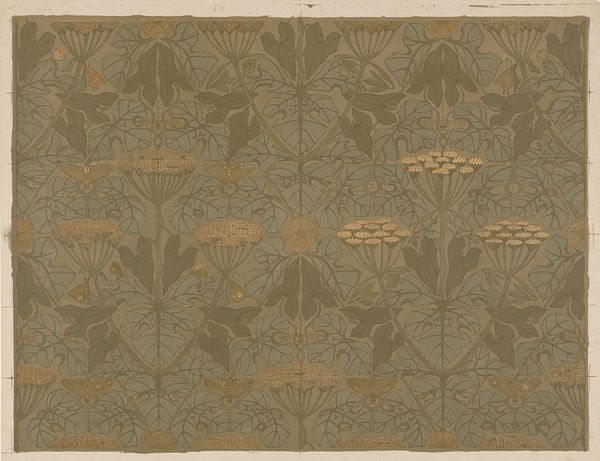
Dimensions: 217.5 × 171.7 cm (85 5/8 × 67 5/8 in.) Repeat: 110.5 × 84.3 cm (43 1/2 × 33 1/8 in.)
Copyright: Public Domain
William Morris designed this woven wool textile known as 'Peacock and Dragon' sometime in the late 19th century. Its interlocking figures and organic forms are typical of the Arts and Crafts movement, which stood in opposition to industrial manufacturing. Morris was deeply concerned with the social and environmental effects of industrialization in England. His designs drew inspiration from nature and medieval craft traditions, offering an alternative to mass-produced goods. But these textiles, while advocating for a return to handcraftsmanship, were usually purchased by wealthy patrons, so they reflect the contradictions of a progressive movement that was also entangled with the economic structures it critiqued. To understand Morris's work, we can delve into archives, explore textile manufacturing history, and consider the cultural meanings of peacocks and dragons. Such research reveals how the Arts and Crafts movement sought to redefine the role of art in a rapidly changing society.
Comments
No comments
Be the first to comment and join the conversation on the ultimate creative platform.
